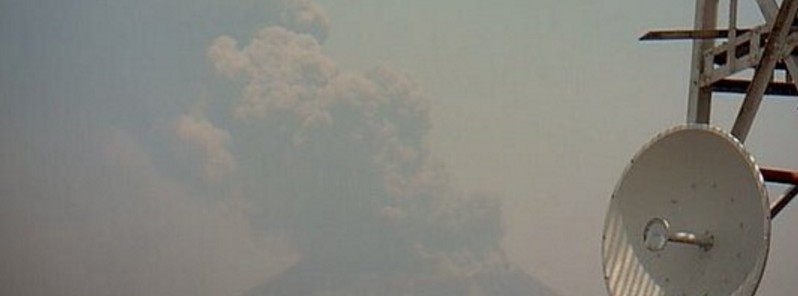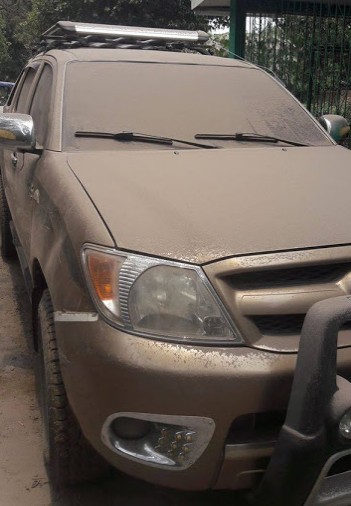Strong eruption at San Cristobal volcano, Nicaragua

A new eruption started at San Cristobal volcano, Nicaragua at 16:20 UTC on April 22, 2016. Over the next 2 hours, 10 explosions were observed. The last time this volcano erupted was on June 12, 2015.
Yesterday’s explosion expelled columns of ash, gas and rock fragments that reached 2 000 m (6 561 feet).
Moderate ashfall was reported in the communities of Las Brisas, San José, Santa Narcisa, Pellizco Central, Los Ébanos, Los Lirios, Santa Cruz, Las Grietas, El Liberal and San Lucas located in Chichigalpa and Chinandega.

Image credit: Bayardo Ruiz
Similar eruptions of San Cristobal were observed in June 2015:
According to INETER, about 41 gas explosions occurred at San Cristóbal between 13:54 and 16:25 local time on June 6, 2015. The strongest one occurred at 13:55, and generated an ash plume that rose 200 m (656 feet) above the crater rim and drifted SE. After the short period of increased activity, San Cristóbal returned to a calm state.
INETER reported that at 09:07 local time on June 23, 2015, an explosion at San Cristóbal generated a gas-and-ash plume that rose 2 km (6 561 feet) and drifted SE. An explosion at 18:35 produced a gas plume with low ash content; the height of the plume was unable to be determined due to inclement weather. INETER noted that seismicity remained at background levels. Seismic signals detected a lahar between 18:50 and 19:29; an observer reported that the small lahar descended the W and SW flanks.
Geological summary
The San Cristóbal volcanic complex, consisting of five principal volcanic edifices, forms the NW end of the Marrabios Range. The symmetrical 1 745 m (5 725 feet) high youngest cone, named San Cristóbal (also known as El Viejo), is Nicaragua’s highest volcano and is capped by a 500 x 600 m (1 640 x 1 970 feet) wide crater.
El Chonco, with several flank lava domes, is located 4 km (2.5 miles) W of San Cristóbal; it and the eroded Moyotepe volcano, 4 km (2.5 miles) NE of San Cristóbal, are of Pleistocene age.
Volcán Casita, containing an elongated summit crater, lies immediately east of San Cristóbal and was the site of a catastrophic landslide and lahar in 1998. The Plio-Pleistocene La Pelona caldera is located at the eastern end of the complex.
Historical eruptions from San Cristóbal, consisting of small-to-moderate explosive activity, have been reported since the 16th century. Some other 16th-century eruptions attributed to Casita volcano are uncertain and may pertain to other Marrabios Range volcanoes.
Featured image: San Cristobal eruption on April 22, 2016. Credit: INETER

This is not a new thing. Nicaragua has ALWAYS been a volcanic and earthquake zone. THAT”S why the U.S. did NOT choice it for a Canal.